
scrounge: /skrounj/ informal verb: to actively seek [books] from any available source
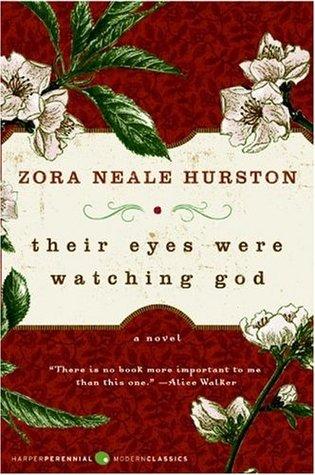
I'm a bit surprised that I managed to obtain an English degree without being assigned to read Their Eyes Were Watching God, because I can see why it's such a major American novel.
In the afterword written by Henry Louis Gates, Jr., he mentions that Hurston saw her first novel (written a few years before this one) as "a manifesto against the 'arrogance' of whites assuming that 'black lives are only defensive reactions to white actions.'" This book also seems to avoid the reactionary point of view, and tries to simply capture black culture and people as they were, without requiring a "contrast" of white characters, unlike some of the other novels by black authors from the same period (a few of which I actually was assigned in college).
Hurston used vernacular speech in the dialog here, which for me meant it took a little longer to read, but sometimes that's a good thing. I loved the flow of the writing, and there were a few moments of humor as well. Toward the end of the story, the main characters are involved in a hurricane, which was a bit of deja vu to read during hurricane season last year when Florida had just been hit by Irma -- but this is one section where the descriptions are the best, and contains the title line.
To be honest, I didn't find Janie Crawford that sympathetic of a character in the beginning of the story, although the first page or so of the novel is a gem all on its own. But as the chapters passed and Janie and the scenery around her became more developed, I appreciated more the glimpse into this particular time and place, the way the story pulled me in, and the lyrical (as it has oft been described) style that is employed in so much of the narrative. The ending of the story navigated so well between heartbreak and determination, and kept me up past my bedtime (so in other words, I expected to like it a little but ended up liking it a lot).
Scrounged From: Our local flea market
Format: Paperback
Author: Zora Neale Hurston
Pages: 237
Content Advisory: A few swear words, a violent scene at the end (involving a gun) as well as a few instances and mentions of domestic violence, and a couple non-explicit sexual scenes.
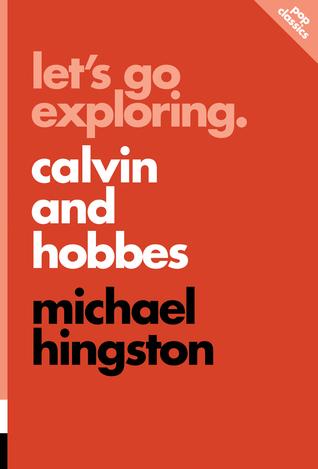
Let's Go Exploring: Calvin and Hobbes was an entertaining and informative book for me since, although I very much enjoy Calvin and Hobbes, I didn't discover it until well after its newspaper run had ended (I didn't learn to read until about halfway through it, and we were overseas for the rest). So while some fans may be well aware of the timeline of the strip, this was all new information to me, so very interesting.
Aside from tracing the evolution of the strip and creator Bill Watterson's career, the author spends some time analyzing what it was about this strip that made it so beloved by nearly everyone, covering major characters and familiar elements -- as he mentions early on, there are "haters" for just about anything, but very rarely for Calvin and Hobbes. This part (the first couple chapters) was enjoyable and can help fans feel a sense of commonality in their appreciation of the strip, without getting bogged down in details or overanalysis.
The final chapter covers the numerous tributes and homages that have continued to try and help fans fill the gap left by Calvin and Hobbes since its end. This was slightly less interesting to me, but at the same time it also ponders the question of why so many felt the need to find closure in the first place, and demonstrates the degreee to which Calvin and Hobbes has become a pop culture icon, even without lucrative licensing.
(Thanks to NetGalley for the review copy.)
Scrounged From: NetGalley
Format: Kindle
Author: Michael Hingston
Pages: 120
Content Advisory: None
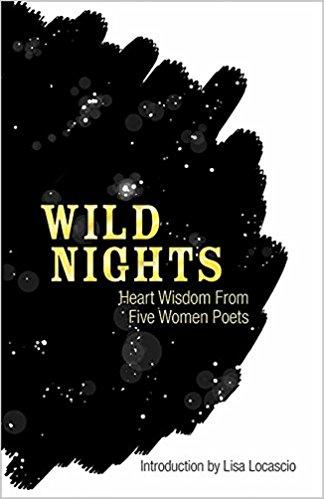
Wild Nights: Heart Wisdom from Five Women Poets is a lovely collection of poetry from some well-known female poets of the recent (and distant) past, including some of my favorites. This collection focuses on feelings, romance, heartbreak, and other things to do with love and life. In order, the poets included here are:
Sappho: I'd heard the name before, but knew nothing of this most famous Greek poet from more than two thousand years ago. While Sappho's "voice" often varies based on the translator, she still speaks and influences poets and readers after all this time. I wasn't able to get into all of her poetry, but still appreciated the opportunity to read and learn some culture.
Emily Dickinson: I have enjoyed Dickinson's poetry since I was first introduced to it. I really like her penchant for using slant rhymes, and for being short and to the point in her writing. Not all of my favorites were included here, but it's always good to read her again.
Amy Lowell: Lowell was a poet I have probably heard of but had not been introduced to yet. I don't tend to enjoy free verse as much as form, but I still found some poems that I enjoyed, especially "Fireworks."
Sara Teasdale: I was introduced to Teasdale's poetry in my poetry writing class in college, and she became one of my favorite poets. This collection included some of my favorites of hers as well as some I hadn't read yet. I love her ability to communicate complicated feelings so clearly, and also the way she often uses aspects of nature to do so.
Edna St. Vincent Millay: As a fellow Mainer, I was familiar with some of her work and glad to read it again. Much of it struck me as more cynical than I'd noticed before, but maybe it was just these particular selections. There is much here about loss of love as well as a general noncommittal attitude at times. But she expresses feelings so beautifully, whether in sonnets or freer forms.
The end includes biographies of the poets (or at least what little is known of them, in the case of Sappho). It was interesting to note how Sappho influenced so many of these poets, and even though their styles are different, their "heart wisdom" is very similar.
(Thanks to NetGalley for the review copy.)
Scrounged From: NetGalley
Format: Kindle
Authors: Sappho, Emily Dickinson, Amy Lowell, Sara Teasdale, and Edna St. Vincent Millay, with Lisa Locascio
Pages: 144
Content Advisory: Some poems are romantic/erotic in nature, but not explicit.
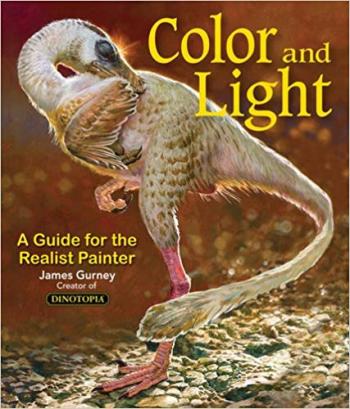
Book Scrounger's note: The following is a guest review by Doug, a.k.a. Professor Puzzler.
Color and Light was a Christmas gift Book Scrounger gave me this year. Now it's two days later, and I've already finished reading it, but I intend to keep it close at hand for a long time, because it is a fantastic reference work for artists, and it has plenty of beautiful paintings to study and learn from.
This book was written by James Gurney, the creator of Dinotopia. Dinotopia is a fantasy land in which humans co-exist with intelligent dinosaurs. It has been described as a fully-imagined world on par with Tolkien's Middle Earth. I've never read Dinotopia, but Gurney's artwork is beautiful. He describes himself as an "Imaginative Realist."
As someone who is interested in both art and science, I found this book fascinating and informative. Gurney doesn't just talk through how to draw a rainbow -- he explains why rainbows exist, and how they relate to the position of the sun and the antisolar point. What? You don't know what the antisolar point is? I guess you'd better read this book!
Seriously, maybe you're wondering why you need to know the science behind rainbows, or shadows, or reflections in the water. Aside from the fact that these things are interesting, they're also very valuable if you're painting something from your imagination. If you're going to paint a rainbow in an imagined scene, you must understand how rainbows work, or you won't be able to position the rainbow correctly relative to the horizon, the sun, and the cast shadows all around. And if you can't do that, you can't make a picture look realistic. People will always look at your artwork and think, "Something's not quite right..."
Aside from the informative text, this book is filled with beautiful artwork. It begins with some of the traditional "masters," but then moves on to Gurney's own work. He includes some plein-air paintings, as well as many of his imaginative paintings involving dinosaurs and other creatures. Most of the pictures are oil paintings or watercolor paintings, but there is very little in the book that is specific to any particular medium, so if you use acrylics, colored pencils, or other media, this book will still be valuable.
I just discovered that Gurney also wrote a book titled Imaginative Realism: How to Paint What Doesn't Exist. Ah, well...I guess I've got a birthday coming up in a few months...
Scrounged From: Amazon
Format: Paperback
Author: James Gurney
Illustrator: James Gurney
Pages: 224
Content Advisory: Realistic artwork involving dinosaurs and some "creepy" creatures.
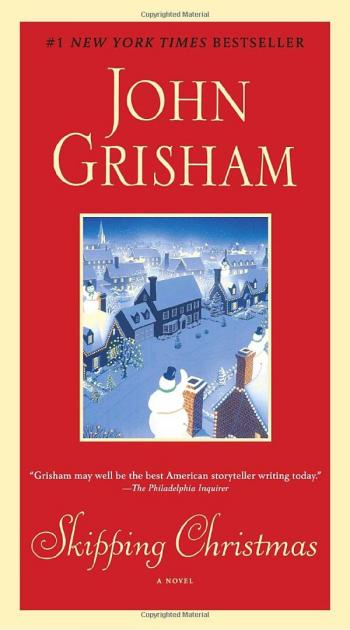
Book Scrounger's note: The following is a guest review by Doug, a.k.a. Professor Puzzler.
There are many people whose only knowledge of the book Skipping Christmas by John Grisham is, "Oh, that's the book that the movie Christmas with the Kranks is based on." If that's your only knowledge of the book, you're really missing out on something.
Even though the movie covers most of the major plot points of the book, it manages to get the book utterly wrong in many ways. So if you weren't a fan of Christmas with the Kranks, give the book a chance. The rest of this review is primarily a comparison of the movie and the book.
Skipping Christmas is the story of Luther and Nora Krank, who decide to skip Christmas (their daughter has moved to Peru, and for the first time in 23 years, they're facing the holiday season without her) and take a holiday cruise instead. Their neighbors and friends are appalled by this decision, and make it very difficult for them to avoid the madness of Christmas preparation. The difficulties they face include: boy scouts who want to sell them a Christmas tree, Reverend Zabriskie worrying about their spiritual condition, and neighbors who are angry with them for having the only house on the street without a giant Frosty on their roof .
It's also the story of two parents who love and miss their daughter. Love and miss her enough that they would do pretty much anything for her.
So how do the book and movie differ? What did the movie get wrong?
- Luther Krank, in the movie, is a cheap version of Ebenezer Scrooge. He's the miserable, unlikeable villain who hates Christmas, doesn't particularly care about his family, and wants to ruin Christmas for boy scouts, orphans, and homeless people. In the book, he is none of these things. He's simply a man who wants to take a break from the insanity of our culture's celebration of Christmas. When the boy scouts want him to buy a tree, he firmly refuses, but in the book, the softer side of his nature compels him to tell them, "Come back in the spring, and I'll give you $100 toward Jamboree." Because the movie version of Luther is portrayed as a Scrooge, the movie has to have everyone awkwardly beat him over the head with his meanness in order to get him to change his ways. In the book, his final actions flow much more naturally, because he actually isn't a villain.
- The movie ignores subtlety and satire, and goes straight for slapstick. When you read the book, you can think to yourself, "I know these people -- they remind me a lot of people I know." They are a little over-the-top, but not so much that they aren't believable. The movie, on the other hand, repeatedly crosses the line into absurdity. Luther sprays his sidewalk with a hose, making an ice patch for carolers to slip on (and in the process freezes the neighbors' cat into a statue). Vic Frohmeyer runs down the street with his hands stuck in Nora's car window, screaming, "Stop the car, Nora! Stop the car!" A race to the last "hickory honey ham" in the supermarket turns into a cringe-worthy disaster that ends with the ham being flattened in the street by an eighteen-wheeler.
- The book knew when to stop. In the book, the first 199 pages lead up to the moment when the neighbors find out about the jam that the Kranks are in. From there, it only takes 28 more pages to wrap up the story -- 28 pages is all that's necessary to move from the problem to a very satisfying solution. The movie, however, shoehorns in a power failure, a burglary, and other very forgettable moments (which annoyed me, but, since they were forgettable, I've already forgotten them -- even though I just re-watched the movie last night). There was no need to to drag out the ending; the joy of the final moments were damaged, rather than enhanced, by the foolishness. And, speaking of damaging the ending, the movie actually added extra slapstick after the heart-warming conclusion; I'm really not sure what the movie-makers thought that would accomplish.
- When Publishers Weekly reviewed Skipping Christmas, they claimed that all good Christmas stories have to rely on an element of fantasy because Christmas is a time of miracles. Thus, they reasoned, Skipping Christmas isn't a good Christmas story, because it is so mundane. I disagree with this, but even so, one could argue that there's room for a supernatural element -- the reader is free to interpret the mysterious stranger Marty (who knows everyone, but is known by no one) in either a mundane or supernatural way. Perhaps he is symbolic of all the forgotten people at Christmas time. Or maybe he is a Christmas angel. Or Santa Claus. The movie, of course, clubs you over the head with the supernatural by showing Marty's volkswagen being pulled by a team of reindeer at the end of the movie.
If you didn't like Christmas with the Kranks, that doesn't mean you should skip Skipping Christmas. Give it a chance. And if you did like the movie, I'd still give the book a chance -- I think you'll find it to be a richer experience.
Format: Paperback
Author: John Grisham
Pages: 256
Content Advisory: A little bit of language, peril, etc. The movie is rated PG, and plotwise it follows the book.
Added note: Just for fun, I wrote a Kranky math problem for my high school math students, loosely based on this book: A Kranky Christmas.

